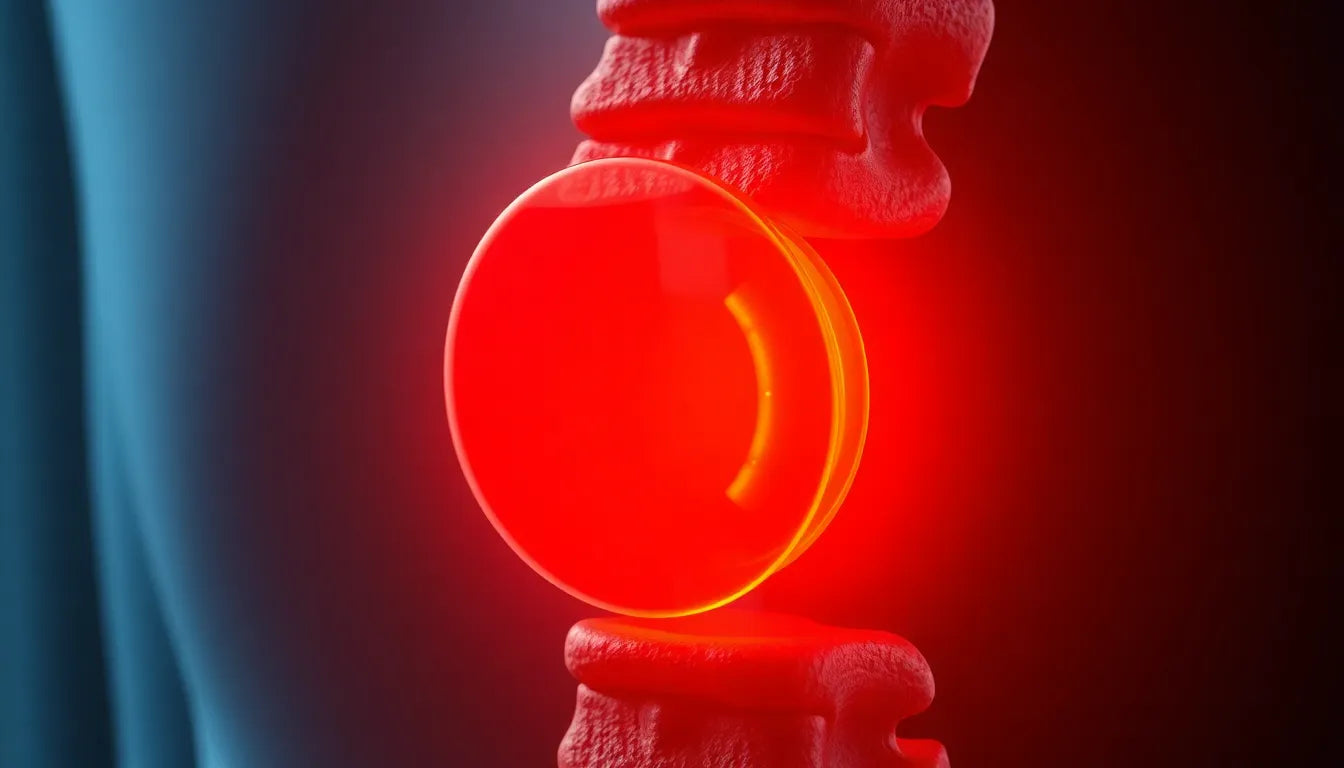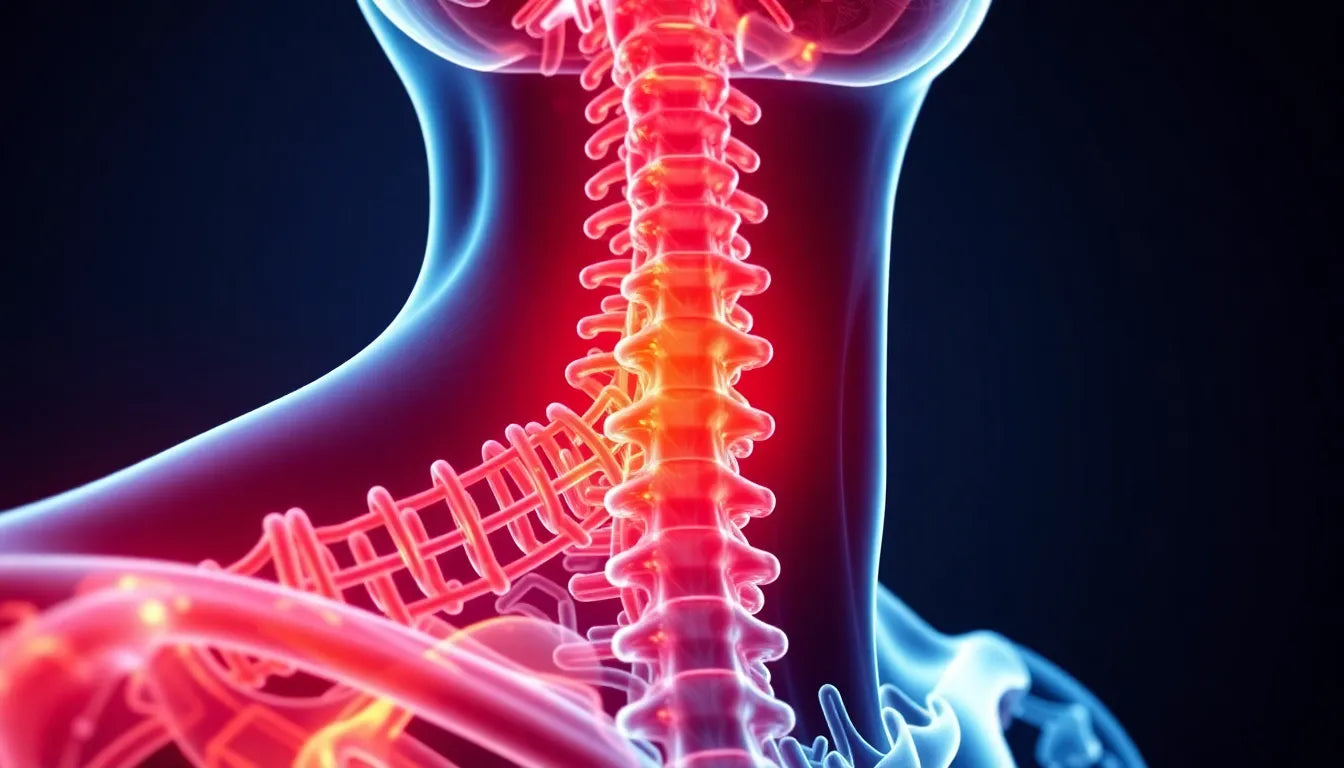Understanding the intricacies of spinal health can be daunting, especially when terms like "small herniated disc" come into play. At its core, a small herniated disc involves a minor protrusion of the disc material in the spine. This condition occurs when the soft inner gel of a spinal disc pushes through a tear in its tougher outer layer. While the term "small" might suggest minimal impact, it's important to note that the size of the herniation doesn't always correlate with the severity of symptoms. Even a small herniation can cause significant discomfort if it impinges on nearby nerves.
Why small herniated discs matter
Small herniated discs are more common than one might think, particularly among adults over the age of 30. As we age, the spinal discs naturally degenerate, making them more susceptible to herniation. This prevalence means that understanding and recognizing the symptoms is crucial for early intervention and effective management.
Typically, a small herniated disc may manifest through localized pain in the back or neck, often accompanied by tingling or numbness in the arms or legs. These symptoms can vary widely depending on the location of the herniation and the nerves affected. For some, the discomfort might be mild and transient, while for others, it can be persistent and debilitating, affecting daily activities and quality of life.
The path to relief
Despite the challenges posed by a small herniated disc, there is hope for relief. By understanding the condition and taking proactive steps to manage it, individuals can significantly reduce their symptoms and improve their overall spinal health. In the following sections, we will delve deeper into the symptoms, diagnosis, and a range of treatment options available, from conservative methods to more advanced interventions. Whether you're seeking to alleviate pain or prevent further deterioration, the journey to relief begins with knowledge and informed choices.
Detailed symptoms and diagnosis of a small herniated disc
Understanding the precise symptoms of a small herniated disc is essential for effective diagnosis and treatment. This condition often presents with a variety of symptoms that can affect both the back and other areas of the body. Localized pain is a common indicator, typically occurring in the back or neck, depending on the disc's location. This pain can range from a dull ache to a sharp, stabbing sensation, often exacerbated by specific movements or positions.
Beyond localized pain, individuals might experience radiating pain or numbness in the limbs. For instance, a herniation in the lumbar spine can lead to leg pain or sciatica, while a cervical herniation might cause discomfort in the arms. Muscle weakness or spasms are also notable symptoms, as the affected nerves struggle to function optimally.
Diagnosing a small herniated disc typically involves a combination of imaging techniques and clinical examination. Magnetic Resonance Imaging (MRI) and Computed Tomography (CT) scans are invaluable tools, providing detailed images of the spine to pinpoint the exact location and severity of the herniation. Additionally, doctors may perform physical tests to assess nerve function and pain response, such as checking reflexes, muscle strength, and sensory perception.
Exploring treatment options for small herniated discs
Once a small herniated disc is diagnosed, a range of treatment options can be considered, often starting with conservative approaches. Physical therapy is a cornerstone of conservative treatment, focusing on exercises and techniques designed to alleviate pain and strengthen the muscles supporting the spine. A physical therapist can tailor a program to the individual's needs, promoting recovery and preventing future injuries.
Pain management is another critical aspect, often involving non-steroidal anti-inflammatory drugs (NSAIDs) to reduce inflammation and discomfort. In some cases, doctors might prescribe stronger medications or muscle relaxants to manage more severe pain or spasms.
For those who do not find relief through conservative methods, advanced interventions may be necessary. Epidural steroid injections can be effective in reducing inflammation and pain, particularly when symptoms are severe or persistent. In rare cases where conservative treatments fail and the herniation significantly impacts quality of life, surgical options such as microdiscectomy might be considered. This minimally invasive procedure involves removing the portion of the disc pressing on the nerve, offering relief from symptoms.
Lifestyle and self-care strategies
In addition to medical treatments, lifestyle adjustments can play a significant role in managing a small herniated disc. Ergonomic changes, such as improving posture and adjusting workspace setups, can help prevent further strain on the spine. Ensuring that chairs, desks, and computer screens are at the correct height can reduce stress on the back and neck during daily activities.
Exercise and mobility are also crucial components of self-care. Low-impact activities like swimming or walking can help maintain mobility without placing undue stress on the spine. These exercises promote circulation, strengthen muscles, and enhance overall well-being, all of which contribute to spinal health.
Taking proactive steps in managing a small herniated disc can lead to significant improvements in symptoms and quality of life. By combining medical treatments with lifestyle adjustments, individuals can navigate the challenges of this condition and find a path to relief. In the next section, we will explore holistic and alternative approaches, along with long-term management strategies to support ongoing spinal health.
Holistic and alternative approaches to managing a small herniated disc
While traditional medical treatments are often effective, some individuals find relief through holistic and alternative therapies. Chiropractic care, for example, can offer potential benefits by improving spinal alignment and reducing nerve pressure. However, it's important to consult with a qualified chiropractor and ensure that any adjustments are appropriate for your specific condition, as improper techniques could exacerbate symptoms.
Acupuncture is another alternative therapy that some people find beneficial. By stimulating specific points on the body, acupuncture can help alleviate pain and promote overall well-being. Similarly, massage therapy can reduce muscle tension and improve circulation, which may help relieve discomfort associated with a small herniated disc.
Prevention and long-term management strategies
Preventing future issues and managing a small herniated disc over the long term involves a commitment to healthy lifestyle choices. Regular exercise is crucial, as it helps maintain flexibility and strengthen the muscles that support the spine. Low-impact activities like walking, swimming, and yoga are excellent options that provide cardiovascular benefits without placing undue stress on the back.
Weight management is also important in reducing the strain on the spine. Maintaining a healthy weight minimizes the pressure on spinal discs, potentially preventing further herniation or exacerbation of existing conditions. A balanced diet rich in anti-inflammatory foods can support overall spinal health and contribute to weight management efforts.
Frequently Asked Questions
What is a small herniated disc?
A small herniated disc occurs when the soft center of a spinal disc pushes through a crack in the tougher exterior casing but is considered minor in size.
Can a small herniated disc heal on its own?
Yes, many small herniated discs can heal over time with proper rest, physical therapy, and lifestyle adjustments.
What are the best exercises for a small herniated disc?
Low-impact exercises such as walking, swimming, and specific physical therapy exercises designed to strengthen the back and core muscles are recommended.
When should I see a doctor for a small herniated disc?
If you experience severe pain, numbness, or weakness that affects your daily activities, it is advisable to consult a healthcare professional.
Is surgery necessary for a small herniated disc?
Surgery is rarely necessary for small herniated discs unless conservative treatments fail and symptoms significantly impair quality of life.
By integrating these holistic approaches and preventive measures, individuals can effectively manage their small herniated discs, finding relief and maintaining spinal health over the long term. Understanding the condition, exploring various treatment options, and committing to a healthy lifestyle are key steps in the journey towards recovery and well-being.























